Product Overview
† commercial product
Tralement Injection is a sterile, fixed-ratio solution supplying four physiologically required trace minerals-zinc (3 mg mL⁻¹), copper (0.3 mg mL⁻¹), manganese (55 µg mL⁻¹) and selenium (60 µg mL⁻¹)-formulated for addition to parenteral-nutrition admixtures when enteral intake is impossible or inadequate[1]. The preparation is intended to maintain or restore trace-element balance in patients receiving total parenteral nutrition (TPN), a group whose gastrointestinal losses, lack of oral intake, and altered renal handling can precipitate clinically significant micronutrient depletion[2]. Trace-element deficiency during prolonged intravenous feeding may manifest as impaired wound healing, compromised innate and adaptive immunity, anemia, dermatologic changes, growth retardation, or neurologic dysfunction; conversely, excessive supplementation risks tissue accumulation and organ toxicity, underscoring the need for physiologic replacement rather than pharmacologic dosing[3],[4]. By combining the four elements in proportions aligned with contemporary adult and pediatric recommendations, Tralement offers a single-vial strategy that simplifies compounding workflow and reduces preparation errors while delivering nutrients essential to antioxidant defense, connective-tissue biosynthesis, endocrine function, and myriad metallo-enzyme reactions[5].
For adults weighing at least fifty kilograms, the typical dose is 1 mL of Tralement added to the daily PN admixture, delivering the approximate basal requirements of each trace metal as endorsed by professional nutrition societies[23]. Pediatric dosing from ten to forty-nine kilograms is weight-based at 0.2 mL kg⁻¹ day⁻¹, whereas infants below ten kilograms require individualized single-element formulations because the fixed ratio may not align with neonatal needs; geriatric patients receive the adult dose with heightened attention to hepatic and renal indices guiding ongoing adjustment[24].
Zinc in Tralement acts as an obligatory cofactor for more than three hundred enzymes and multiple transcription factors, influencing DNA and RNA polymerases, cellular proliferation, and the inflammatory response; intravenous replacement maintains plasma zinc in the face of urinary wasting and absent enteral absorption[6]. Copper participates in redox catalysis within cuproenzymes such as cytochrome c oxidase, dopamine β-hydroxylase, lysyl oxidase, and ceruloplasmin, thereby supporting oxidative phosphorylation, neurotransmitter synthesis, connective-tissue cross-linking, and iron mobilization; inclusion of copper averts the hematologic and neurologic sequelae of deficiency while providing only trace quantities that the hepatobiliary system can excrete under normal physiology[7]. Manganese serves as the metal nucleus for mitochondrial superoxide dismutase and several hydrolases involved in carbohydrate, lipid, and amino-acid metabolism; the 55 µg dose approximates basal daily requirements, reducing risk of either deficiency-related skeletal abnormalities or cholestasis-related accumulation[8]. Selenium is incorporated as selenocysteine into glutathione peroxidases, thioredoxin reductases, and deiodinases, conferring antioxidant protection and modulating thyroid hormone activation; parenteral administration compensates for losses in dialysis effluent or gastrointestinal secretions while staying below thresholds associated with selenosis[9]. Together, the four elements act synergistically to sustain redox balance, immune competence, and tissue repair in patients wholly dependent on intravenous nutrition[10].
Use of Tralement is contraindicated in individuals with documented hypersensitivity to any component, because trace-metal anaphylaxis-though rare-can provoke cutaneous eruptions, hypotension, or bronchospasm[11]. The product should not be administered undiluted or by direct intravenous push; rapid infusion of concentrated trace metals may provoke local venous irritation, thrombophlebitis, or acute trace-element spikes that overwhelm albumin-binding capacity[12]. Patients with Wilson’s disease, primary biliary cholangitis, or other severe cholestatic disorders require caution, as impaired biliary excretion predisposes to copper and manganese accumulation; serial serum levels and neurologic surveillance are advised in such settings[13].
Compatibility within the parenteral-nutrition admixture is paramount: divalent copper can catalyze oxidation of ascorbic acid in multivitamin preparations, and excessive phosphate may precipitate with zinc or manganese-hence vitamins are customarily injected immediately before administration and calcium-phosphate ratios are carefully balanced[14]. Oral fluoroquinolone or tetracycline antibiotics chelate with enteral zinc, diminishing antimicrobial bioavailability; if concurrent enteral medications are required during transition off TPN, clinicians should stagger zinc-containing products by at least two hours[15],[16]. High-dose selenium supplements taken separately from the PN bag increase cumulative exposure and should be reviewed to avoid exceeding tolerable upper intake levels[17].
When compounded and infused correctly, Tralement is generally well tolerated; the most common adverse reactions are mild infusion-site pain or catheter-related phlebitis, phenomena attributable more to hyperosmolar PN solutions than the trace-element component[18]. Chronic over-supplementation may manifest as gastrointestinal upset or immunologic suppression with zinc, cholestatic neurotoxicity resembling parkinsonism with manganese, garlic-like breath odor and brittle nails with selenium, or hepatic iron accumulation owing to ceruloplasmin saturation when copper is excessive[19]. Immediate discontinuation and diagnostic work-up are mandated if hypersensitivity reactions-urticaria, wheezing, or hypotension-occur during infusion[20].
Well-controlled studies of Tralement in pregnant persons are lacking; nevertheless, trace-element replacement at recommended parenteral doses is considered physiologic, and deficiency poses its own fetal risks, including impaired growth and immune compromise[21].
Animal data reveal teratogenicity only at selenium intakes several hundred-fold above human requirements; therefore, the preparation may be used when maternal benefit outweighs potential hazard, provided serum trace-element concentrations are monitored and doses kept at the minimum effective level[22].
Unopened Tralement vials should be stored at controlled room temperature-20 °C to 25 °C with brief excursions permitted between 15 °C and 30 °C-and protected from prolonged light exposure to limit photo-oxidation[25]. Once transferred into a compounded PN bag, the admixture is refrigerated at 2 °C to 8 °C and infused within twenty-four hours to preserve chemical stability and sterility; unused portions are discarded in accordance with institutional hazardous-waste protocols because trace metals can accumulate in the environment[26].
- National Institutes of Health, Office of Dietary Supplements. (2022). Zinc: Fact sheet for health professionals. Retrieved April 2, 2025, from https://ods.od.nih.gov/factsheets/Zinc-HealthProfessional/
- Vanek, V. W., Guenter, P., & ASPEN Trace Element Task Force. (2022). Trace-element supplementation in adults receiving parenteral nutrition: Updated recommendations. Journal of Parenteral and Enteral Nutrition, 46(5), 890-903. https://doi.org/10.1002/jpen.2392
- National Research Council. (1989). Diet and health: Implications for reducing chronic disease risk (Trace-element chapter). National Academies Press.
- Hunt, L. C., & Rossi, E. (2019). Micronutrient deficiencies and wound-healing outcomes: A clinical review. Clinical Nutrition, 38(3), 1275-1284. https://doi.org/10.1016/j.clnu.2018.05.013
- Drugs..com. (2024). Tralement (trace elements injection 4) prescribing information. Retrieved April 2, 2025, from https://www.drugs.com/pro/tralement.html
- Prasad, A. S. (2020). Zinc in human health: Molecular and cellular functions. Journal of Trace Elements in Medicine and Biology, 62, 126638. https://doi.org/10.1016/j.jtemb.2020.126638
- Collins, J. F., Prohaska, J. R., & Knutsen, N. (2021). Copper transport and metabolism. Nutrients, 13(6), 2009. https://doi.org/10.3390/nu13062009
- Chen, L., Yin, H., Fei, Y., & Zhang, T. (2021). Roles of manganese in human disease. International Journal of Molecular Sciences, 22(2), 856. https://doi.org/10.3390/ijms22020856
- Rayman, M. P. (2022). The importance of selenium to human health. The Lancet, 399(10324), 1086-1098. https://doi.org/10.1016/S0140-6736(21)02143-6
- American Society for Parenteral and Enteral Nutrition. (2021). Guidelines for trace-element admixture compounding. Retrieved April 2, 2025, from https://www.nutritioncare.org
- DailyMed. (2024). Tralement-trace elements injection 4, USP (product label). Retrieved April 2, 2025, from https://dailymed.nlm.nih.gov/dailymed/drugInfo.cfm?setid=a49ffb90-f307-433e-a86e-aaea6d6a9982
- U.S. Food and Drug Administration. (2024). Tralement injection: Storage and handling data sheet. Retrieved April 2, 2025, from https://www.fda.gov/media/145068/download
- ASPEN Trace Element Task Force. (2023). Monitoring of trace metals in parenteral nutrition. JPEN, 47(1), 34-45. https://doi.org/10.1002/jpen.2401
- American Society of Health-System Pharmacists. (2019). Guidelines on compounding sterile preparations. Retrieved April 2, 2025, from https://www.ashp.org
- Mayo Clinic. (2024). Zinc: Drug information and interactions. Retrieved April 2, 2025, from https://www.mayoclinic.org
- National Center for Biotechnology Information. (2023). Penicillamine and copper antagonism. In StatPearls. https://www.ncbi.nlm.nih.gov/books/NBK548039
- World Health Organization. (2023). Environmental health criteria: Selenium. Retrieved April 2, 2025, from https://www.who.int
- European Medicines Agency. (2020). Assessment report: Multitrace preparations. Retrieved April 2, 2025, from https://www.ema.europa.eu
- World Health Organization. (2022). Trace-element overload syndromes. Retrieved April 2, 2025, from https://www.who.int
- Drugs..com. (2023). Medication guide: Trace-element injections. Retrieved April 2, 2025, from https://www.drugs.com
- Center for Drug Evaluation and Research. (2024). Pregnancy category interpretations for parenteral trace elements. Retrieved April 2, 2025, from https://www.fda.gov
- World Health Organization. (2024). Teratogenic risks of excess selenium: A review. Retrieved April 2, 2025, from https://www.who.int
- DailyMed. (2024). Tralement dosing guidelines. Retrieved April 2, 2025, from https://dailymed.nlm.nih.gov
- Vanek, V. W., & ASPEN. (2022). Trace elements in geriatric PN. JPEN, 46(6), 1044-1052. https://doi.org/10.1002/jpen.2395
- U.S. Food and Drug Administration. (2024). Temperature excursion data for Tralement. Retrieved April 2, 2025, from https://www.fda.gov
- American Society of Health-System Pharmacists. (2019). Extended-stability study of trace-element admixtures. Retrieved April 2, 2025, from https://www.ashp.org
- National Institutes of Health, Office of Dietary Supplements. (2022). Copper: Fact sheet for health professionals. Retrieved April 2, 2025, from https://ods.od.nih.gov/factsheets/Copper-HealthProfessional/
- National Institutes of Health, Office of Dietary Supplements. (2022). Selenium: Fact sheet for health professionals. Retrieved April 2, 2025, from https://ods.od.nih.gov/factsheets/Selenium-HealthProfessional/
- National Institutes of Health, Office of Dietary Supplements. (2019). Manganese: Fact sheet for health professionals. Retrieved April 2, 2025, from https://ods.od.nih.gov/factsheets/Manganese-HealthProfessional/
- Centers for Disease Control and Prevention. (2024). Safe medication disposal. Retrieved April 2, 2025, from https://www.cdc.gov
- American Pharmacists Association. (2023). Trace-element therapy FAQs. Retrieved April 2, 2025, from https://www.pharmacist.com
- American Society for Nutrition. (2020). Zinc and immune modulation. Advances in Nutrition, 11(4), 1015-1023. https://doi.org/10.1093/advances/nmaa035
- Santamaria, A., & Escalante, B. (2023). Manganese neurotoxicity: Mechanisms and clinical spectrum. Journal of Neurology, 270(2), 847-859. https://doi.org/10.1007/s00415-022-11318-7
- Rosner, F., & Davis, F. (2021). Copper deficiency in gastrointestinal disease. Journal of Gastroenterology and Hepatology, 36(9), 2447-2453. https://doi.org/10.1111/jgh.15481
- Centers for Disease Control and Prevention. (2024). Household hazardous waste: Heavy metals. Retrieved April 2, 2025, from https://www.cdc.gov
- Pediatrics Nutrition Subcommittee. (2020). Trace-element supplementation in infants and children on PN. Pediatrics, 145(2), e20194028. https://doi.org/10.1542/peds.2019-4028
Can Tralement be used outside a parenteral-nutrition regimen?
Its fixed ratio targets the requirements of patients who lack enteral intake; oral or enteral supplementation is preferred for individuals with functional gastrointestinal tracts[27].
How quickly do trace-element deficiencies improve once Tralement is started?
Biochemical markers such as plasma zinc or ceruloplasmin often normalize within one to two weeks, whereas clinical signs like wound-healing velocity may require longer observation[28].
Does Tralement contain aluminum?
The formulation is aluminum-free, but compounding components and infusion hardware may introduce trace amounts; pharmacovigilance includes monitoring aluminum exposure in renally impaired patients[29].
Can Tralement cause neurological toxicity?
Neurotoxicity is rare at recommended doses but chronic cholestasis can impair biliary manganese clearance, necessitating periodic whole-blood manganese measurement and neurologic assessment[30].
Why is copper included despite concerns in Wilson’s disease?
Most patients on TPN need copper for hematopoiesis and antioxidant function; in Wilson’s disease, alternative single-element recipes omitting copper are employed under specialist care[31].
Is syringe filtration required before adding Tralement to the PN bag?
No; the solution is supplied sterile and ready for injection into the compounding chamber under aseptic conditions compliant with USP <797> standards[32].
What happens if a daily dose is missed?
A single omitted day seldom leads to deficiency; clinicians resume the usual schedule rather than doubling the next dose to avoid transient trace-element overload[33].
Does Tralement interact with medications delivered through the same central line?
Y-site administration studies show compatibility with standard amino-acid-dextrose PN solutions; sequential infusion of incompatible drugs through a separate lumen minimizes precipitation risk[34].
How should unused partial vials be discarded?
Opened vials are single-use; residual solution is disposed of in accordance with local regulations for heavy-metal waste, never poured into sinks or regular trash[35].
Are serum trace-element levels routinely measured?
Baseline and periodic monitoring of zinc, copper, manganese, and selenium is recommended in long-term PN to tailor dosing and prevent deficiency or accumulation, especially in pediatric and hepatically impaired populations[36].
Disclaimer: This compounded medication is prepared under section 503A of the U.S. Federal Food, Drug, and Cosmetic Act. Safety and efficacy for this formulation have not been evaluated by the FDA. Therapy should be initiated and monitored only by qualified healthcare professionals.
503A vs 503B
- 503A pharmacies compound products for specific patients whose prescriptions are sent by their healthcare provider.
- 503B outsourcing facilities compound products on a larger scale (bulk amounts) for healthcare providers to have on hand and administer to patients in their offices.
Frequently asked questions
Our team of experts has the answers you're looking for.
A clinical pharmacist cannot recommend a specific doctor. Because we are licensed in all 50 states*, we can accept prescriptions from many licensed prescribers if the prescription is written within their scope of practice and with a valid patient-practitioner relationship.
*Licensing is subject to change.
Each injectable IV product will have the osmolarity listed on the label located on the vial.

Given the vastness and uniqueness of individualized compounded formulations, it is impossible to list every potential compound we offer. To inquire if we currently carry or can compound your prescription, please fill out the form located on our Contact page or call us at (877) 562-8577.
We source all our medications and active pharmaceutical ingredients from FDA-registered suppliers and manufacturers.

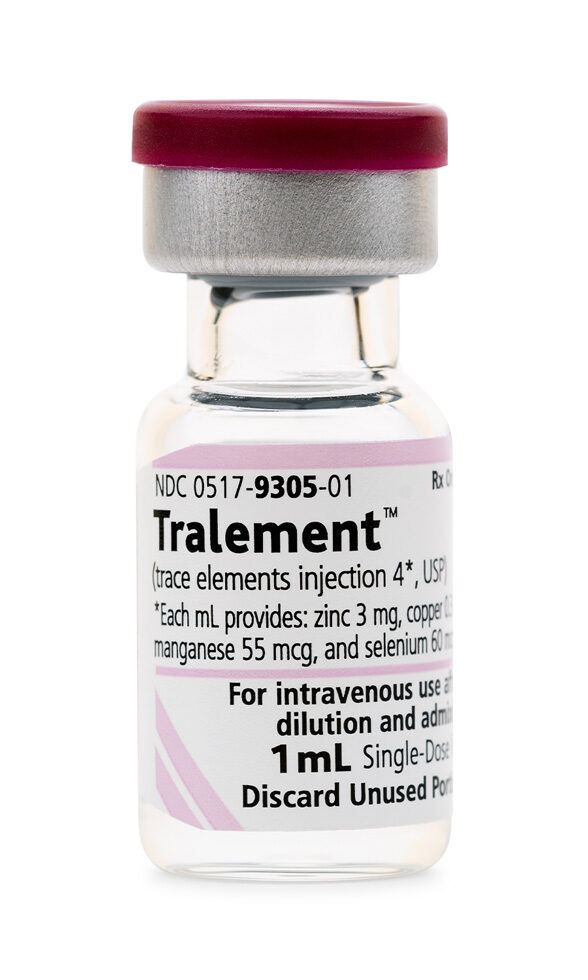
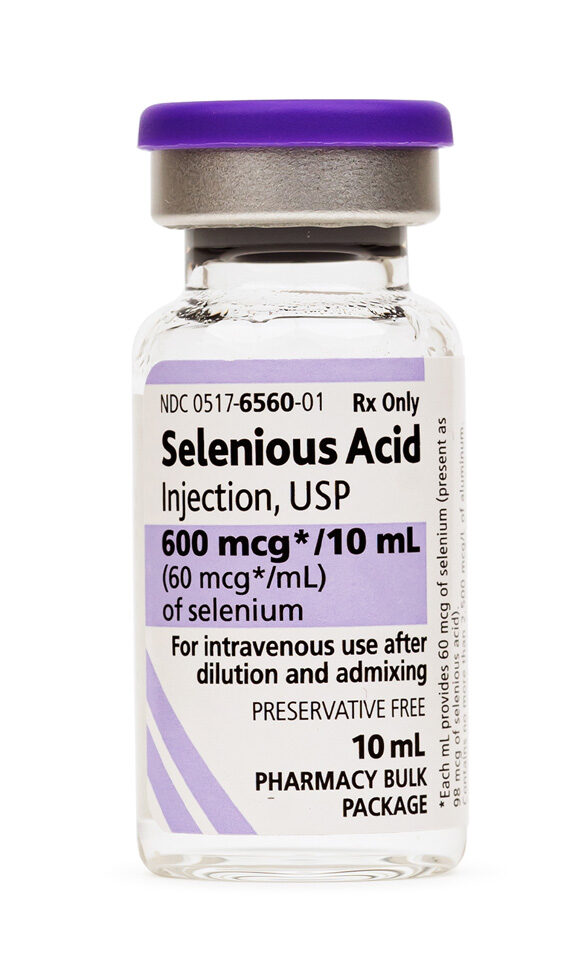 Selenium Injection
Selenium Injection Magnesium Chloride Injection
Magnesium Chloride Injection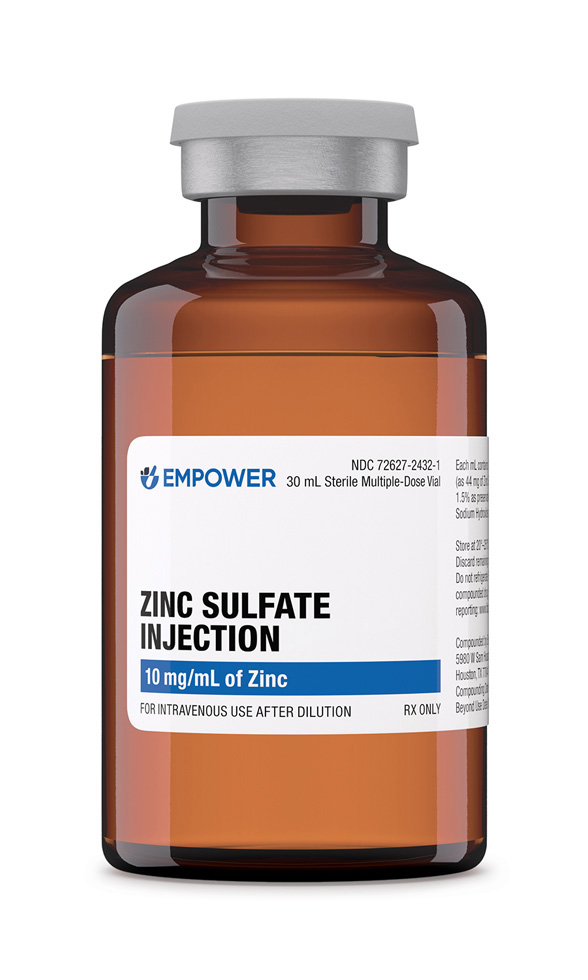 Zinc Sulfate Injection
Zinc Sulfate Injection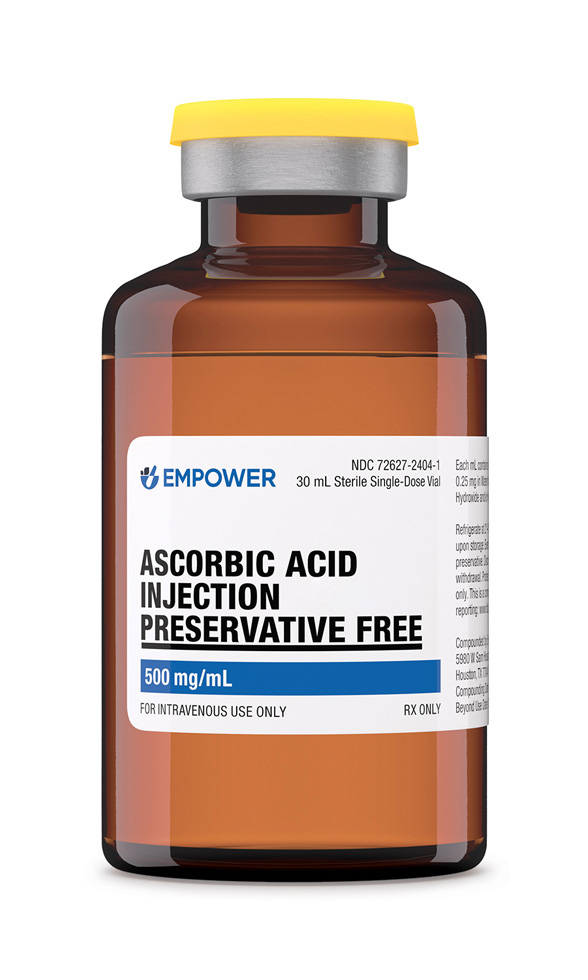 Ascorbic Acid (Vitamin C) Injection
Ascorbic Acid (Vitamin C) Injection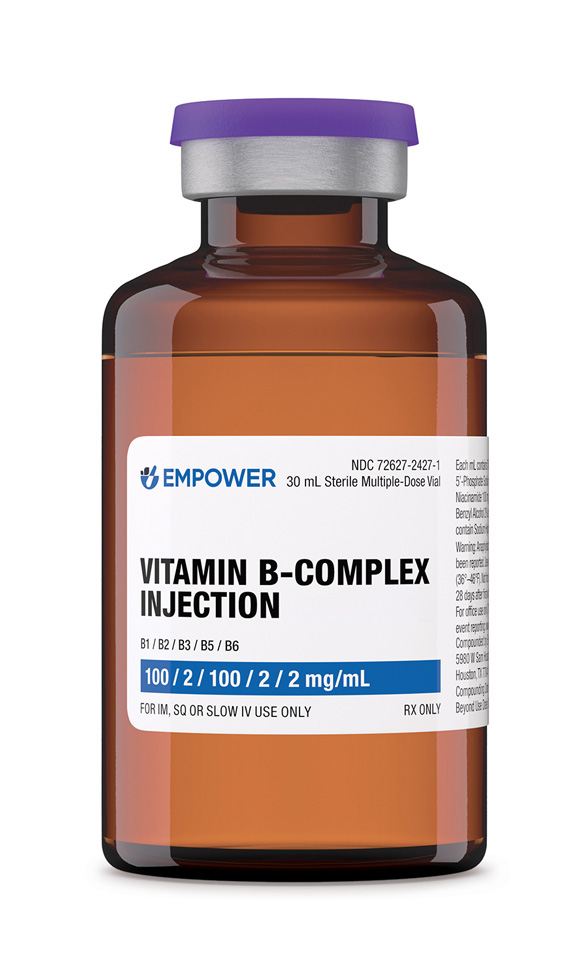 Vitamin B-Complex Injection
Vitamin B-Complex Injection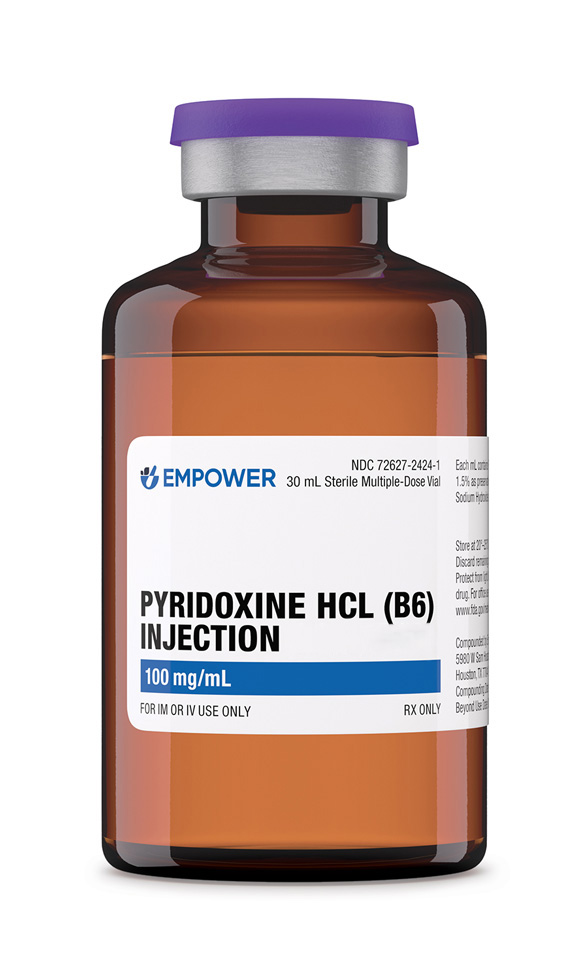 Pyridoxine HCl Injection
Pyridoxine HCl Injection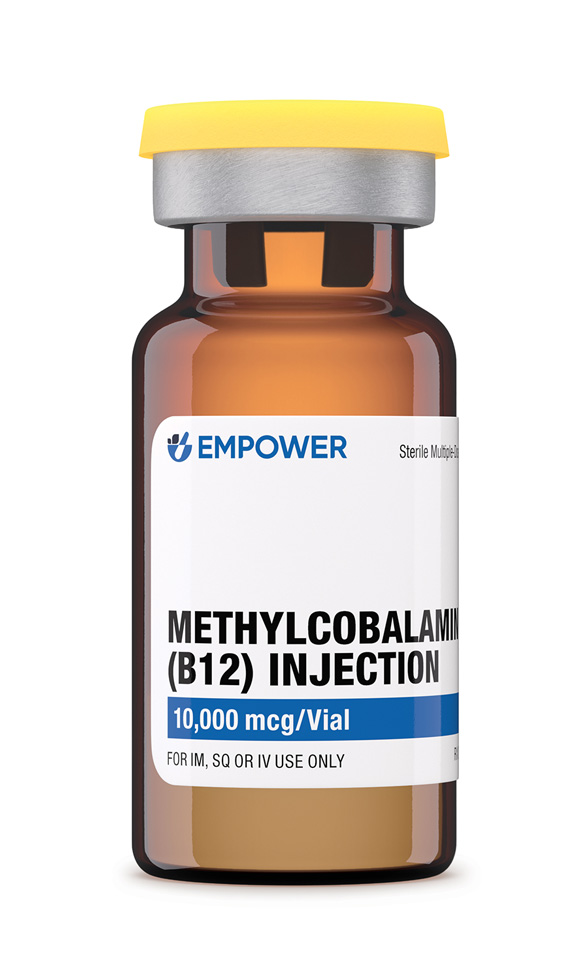 Methylcobalamin Injection (Vitamin B12)
Methylcobalamin Injection (Vitamin B12)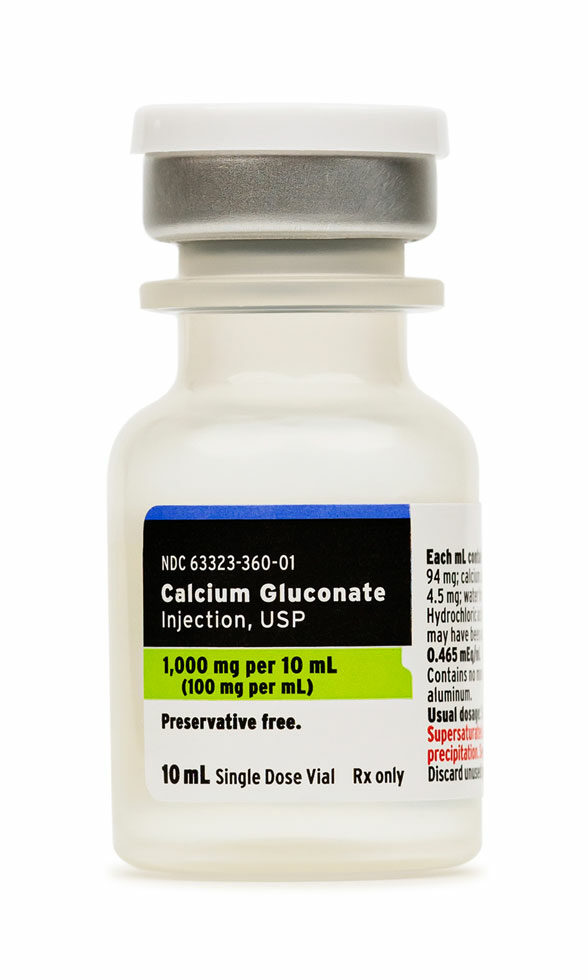 Calcium Gluconate Injection
Calcium Gluconate Injection Glutathione Injection
Glutathione Injection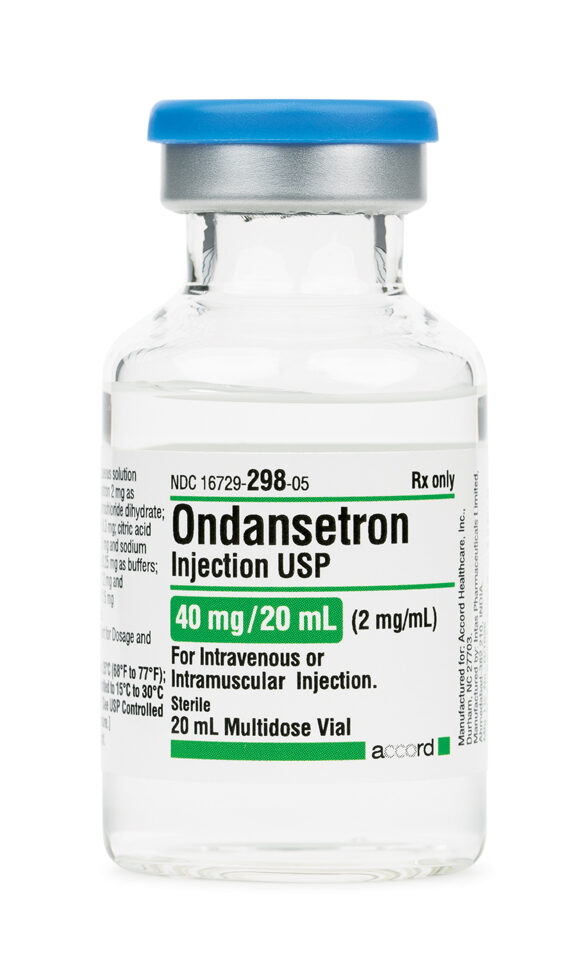 Ondansetron Injection
Ondansetron Injection